
Pig Farming in South Africa
The commercial pig industry in South Africa is relatively small with a few modern piggeries with modern facilities, high feeding costs and excellent genetic material.
©National Pork Board and the Pork Checkoff. Des Moines, IA USA
Pig Farming in South Africa can be on a commercial scale or on a small-scale to boost household income.
South Africa also has thousands of subsistence and small-scale farmers producing pork meat for families and communal use. These small farmers often deal with rudimentary housing facilities and feed.
South Africa Online ® essentially offers a guide to pig farming in South Africa, made up of educational agricultural material in all 11 South African languages. With a range of agricultural articles in an easy-to-read format, pig farmers of South Africa will be able to farm better quality pork under sustainable and safe conditions.
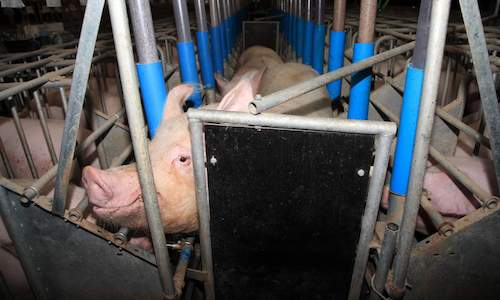
Unlike natural mating where a boar is physically placed with sows to breed, artificial insemination entails the insemination of sows with se...
more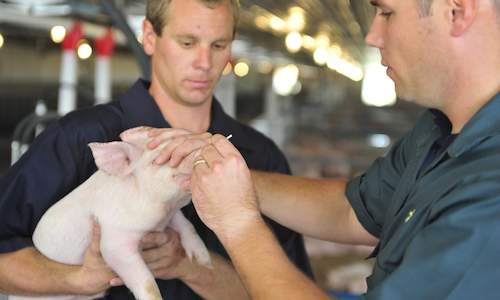
Biosecurity in pig farming is a set of measures or rules to prevent the introduction of diseases on a farm and the spread of diseases or pat...
more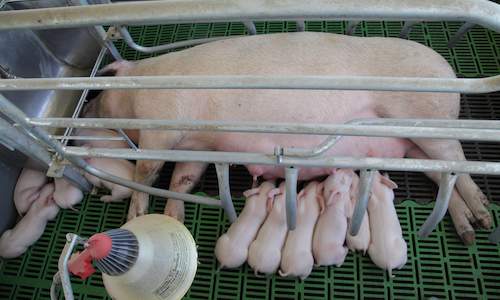
Because of South Africa’s warm climatic conditions, cold stress in pigs is not as serious a problem as in some cooler countries. The winte...
more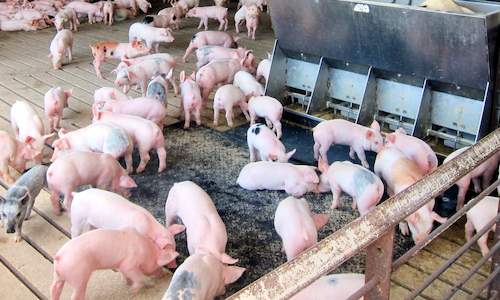
Diarrhoea, vomiting, constipation, hard dry dung with mucus, bloody dung, belly pain, pigs not wanting to eat or eating excessively but not ...
more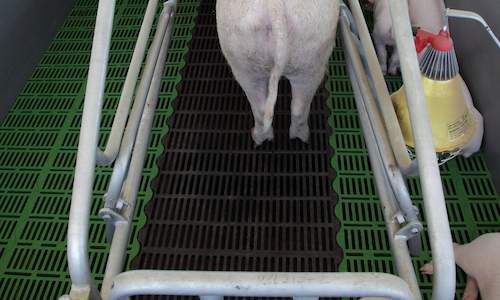
Farrowing crates are one of the best investments a pig farmer can make. Sows are moved to these crates about a week before farrowing and kep...
more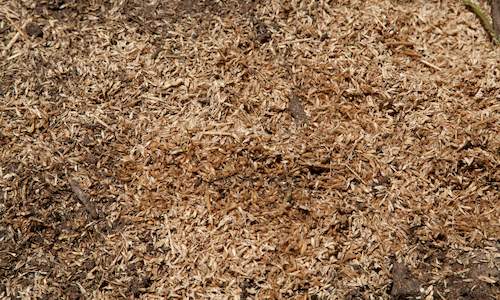
Swill feeding is a big no-no in in pork production, because it can make pigs very sick. The greatest threat is that the pigs might contract ...
more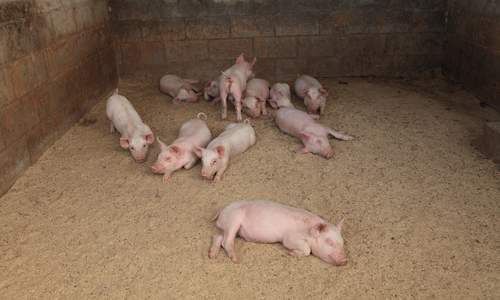
Pigs are highly sensitive to hot and cold climatic conditions. The ideal temperatures at which they should be kept will depend on room tempe...
more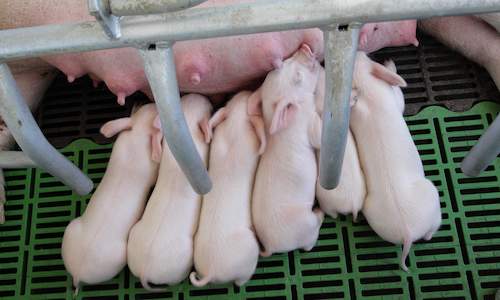
Housing should be matched with the type of pig you want to produce. Unimproved breeds are able to cope under much harsher environmental and ...
more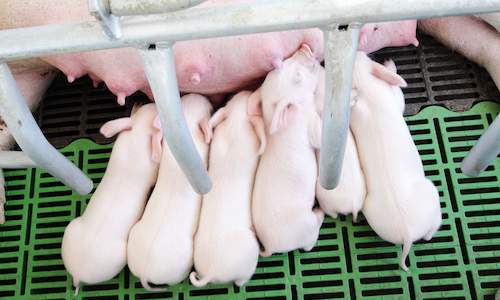
One of the best ways to ensure maximum pig production is to use good genetic material....
more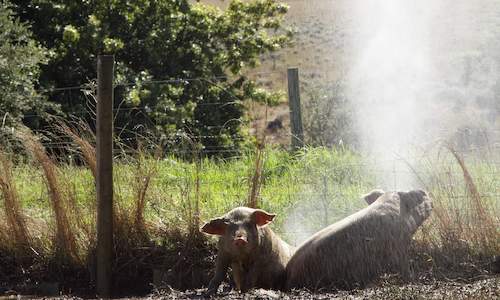
When starting pig farming in South Africa you will need a plan. In fact, everything pig farming enterprise needs a plan, from the thousand-s...
more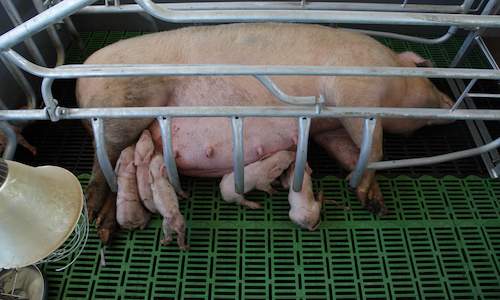
Depending on the species, worms may not only have a negative impact on pig health and production, but also result in condemnation of the car...
more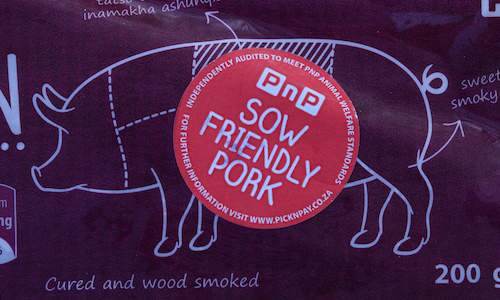
Farmers may allow their pigs to roam freely outside and use no genetically modified feed or antibiotics, but their produce will only qualify...
more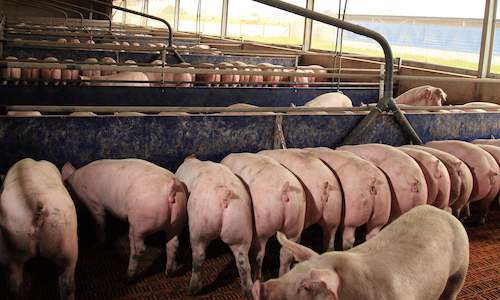
Lameness is a serious problem in pig production. The pain associated with lameness can make it difficult for pigs to walk to feeding and wat...
more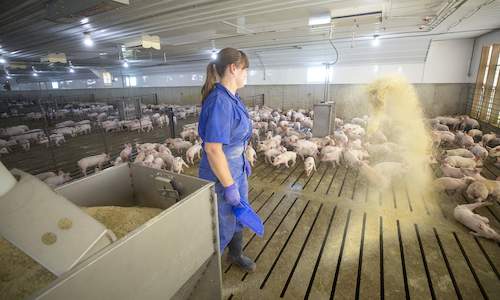
For a pig farming operation to be financially viable, farmers need to secure a market for their pigs and calculate the cost of production be...
more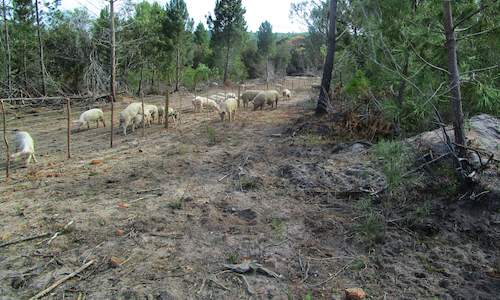
The sow, is the least demanding when pregnant (called a ‘dry sow’ in the industry) but she still has needs. A pregnant sow needs the com...
more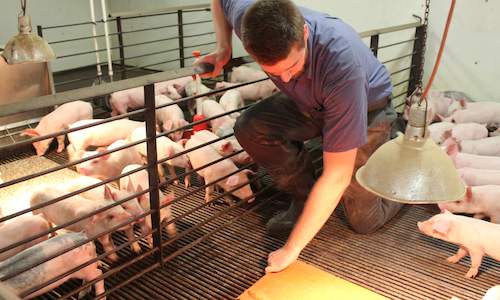
To ensure better production, the first month after weaning piglets is critical and should receive careful attention. The weaning age is not ...
more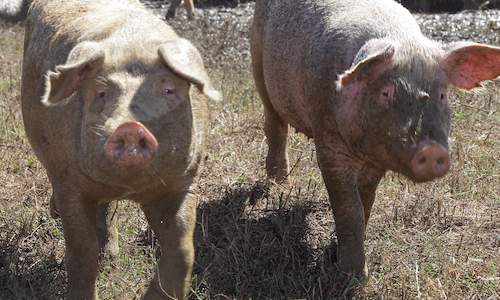
The key with pig health management is to identify problems and diseases before they get out of control. To do so, farmers need to distinguis...
more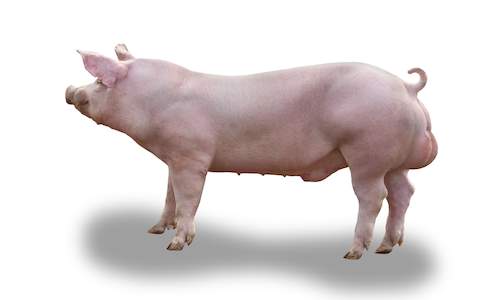
The strategic selection of breeding material can help to upgrade a herd by, for example, increasing litter sizes, improving meat quality and...
more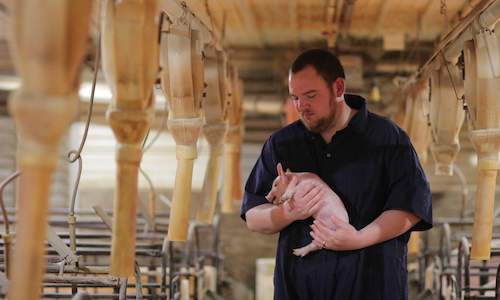
For pig farmers in South Africa to be successful, the health of their pigs is essential. Farmers should be able to recognise the symptoms of...
more
Greasy pig disease and Diamond skin disease are two of the major infectious conditions that may affect the skin of pigs. Both are caused by ...
more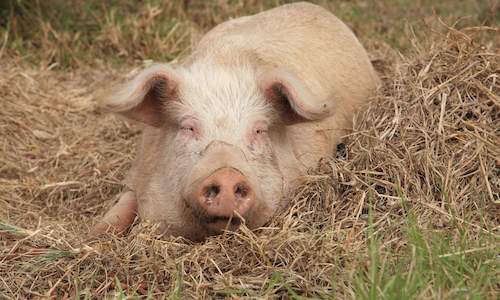
The South African Pig Welfare Code has been drawn up by farmers, vets, transporters, welfare organisations and abattoir operators. It is bas...
more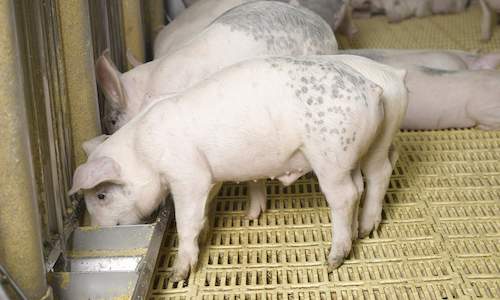
Pigs that are growing slowly or not putting on weight will have a negative impact on farm profitability, with every extra day needed to feed...
more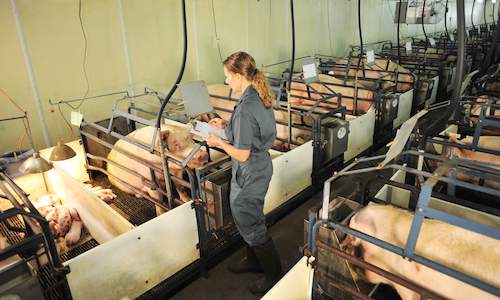
The world's climate is getting warmer and drier and agriculture is under more pressure to produce nutritious and cheap food for Earth's grow...
more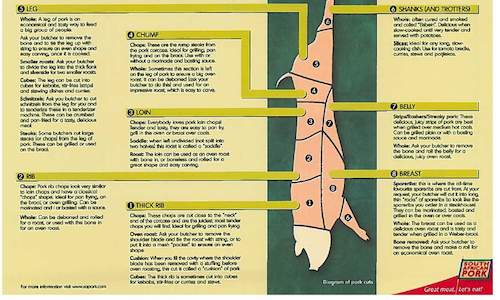
The South African pork industry’s focus on the production of leaner meat has resulted in South African pork having lower fat than pork fro...
more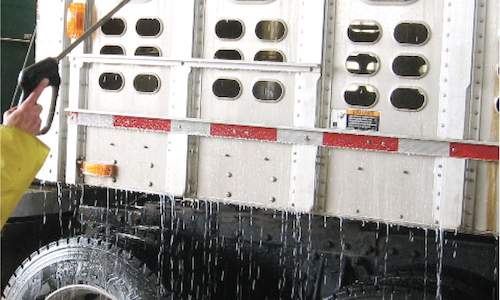
Various regulations and codes of practices need to be followed when transporting pigs. In summary, their aim is to prevent the spreading of ...
more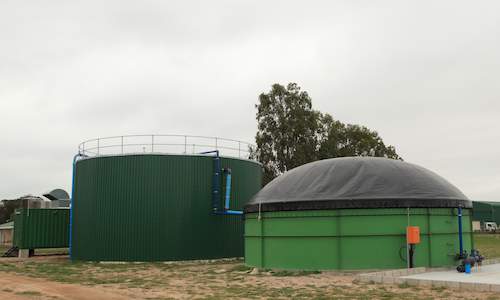
While pig slurry is one of the biggest pollution threats on a pig farm, it can also be used to enhance farm profitability by using it as fer...
more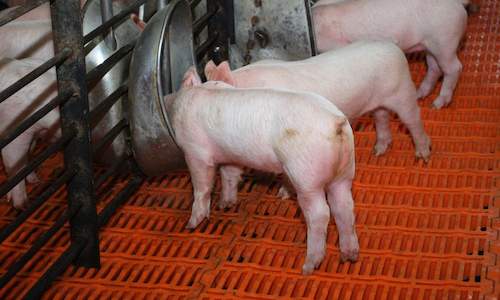
Water is often a neglected topic when it comes to pig production, but it is actually one of the most important factors because of its role i...
more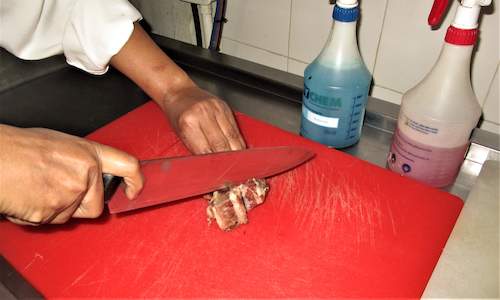
Listeria monocytogenes - although it sounds mysterious and threatening - is an ordinary bacterium that is frequently carried in the animal o...
more
 Unlike natural mating where a boar is physically placed with sows to breed, artificial insemination entails the insemination of sows with se...
Unlike natural mating where a boar is physically placed with sows to breed, artificial insemination entails the insemination of sows with se... Biosecurity in pig farming is a set of measures or rules to prevent the introduction of diseases on a farm and the spread of diseases or pat...
Biosecurity in pig farming is a set of measures or rules to prevent the introduction of diseases on a farm and the spread of diseases or pat... Because of South Africa’s warm climatic conditions, cold stress in pigs is not as serious a problem as in some cooler countries. The winte...
Because of South Africa’s warm climatic conditions, cold stress in pigs is not as serious a problem as in some cooler countries. The winte... Diarrhoea, vomiting, constipation, hard dry dung with mucus, bloody dung, belly pain, pigs not wanting to eat or eating excessively but not ...
Diarrhoea, vomiting, constipation, hard dry dung with mucus, bloody dung, belly pain, pigs not wanting to eat or eating excessively but not ... Farrowing crates are one of the best investments a pig farmer can make. Sows are moved to these crates about a week before farrowing and kep...
Farrowing crates are one of the best investments a pig farmer can make. Sows are moved to these crates about a week before farrowing and kep... Swill feeding is a big no-no in in pork production, because it can make pigs very sick. The greatest threat is that the pigs might contract ...
Swill feeding is a big no-no in in pork production, because it can make pigs very sick. The greatest threat is that the pigs might contract ... Pigs are highly sensitive to hot and cold climatic conditions. The ideal temperatures at which they should be kept will depend on room tempe...
Pigs are highly sensitive to hot and cold climatic conditions. The ideal temperatures at which they should be kept will depend on room tempe... Housing should be matched with the type of pig you want to produce. Unimproved breeds are able to cope under much harsher environmental and ...
Housing should be matched with the type of pig you want to produce. Unimproved breeds are able to cope under much harsher environmental and ... One of the best ways to ensure maximum pig production is to use good genetic material....
One of the best ways to ensure maximum pig production is to use good genetic material.... When starting pig farming in South Africa you will need a plan. In fact, everything pig farming enterprise needs a plan, from the thousand-s...
When starting pig farming in South Africa you will need a plan. In fact, everything pig farming enterprise needs a plan, from the thousand-s... Depending on the species, worms may not only have a negative impact on pig health and production, but also result in condemnation of the car...
Depending on the species, worms may not only have a negative impact on pig health and production, but also result in condemnation of the car... Farmers may allow their pigs to roam freely outside and use no genetically modified feed or antibiotics, but their produce will only qualify...
Farmers may allow their pigs to roam freely outside and use no genetically modified feed or antibiotics, but their produce will only qualify... Lameness is a serious problem in pig production. The pain associated with lameness can make it difficult for pigs to walk to feeding and wat...
Lameness is a serious problem in pig production. The pain associated with lameness can make it difficult for pigs to walk to feeding and wat... For a pig farming operation to be financially viable, farmers need to secure a market for their pigs and calculate the cost of production be...
For a pig farming operation to be financially viable, farmers need to secure a market for their pigs and calculate the cost of production be... The sow, is the least demanding when pregnant (called a ‘dry sow’ in the industry) but she still has needs. A pregnant sow needs the com...
The sow, is the least demanding when pregnant (called a ‘dry sow’ in the industry) but she still has needs. A pregnant sow needs the com... To ensure better production, the first month after weaning piglets is critical and should receive careful attention. The weaning age is not ...
To ensure better production, the first month after weaning piglets is critical and should receive careful attention. The weaning age is not ... The key with pig health management is to identify problems and diseases before they get out of control. To do so, farmers need to distinguis...
The key with pig health management is to identify problems and diseases before they get out of control. To do so, farmers need to distinguis... The strategic selection of breeding material can help to upgrade a herd by, for example, increasing litter sizes, improving meat quality and...
The strategic selection of breeding material can help to upgrade a herd by, for example, increasing litter sizes, improving meat quality and... For pig farmers in South Africa to be successful, the health of their pigs is essential. Farmers should be able to recognise the symptoms of...
For pig farmers in South Africa to be successful, the health of their pigs is essential. Farmers should be able to recognise the symptoms of... Greasy pig disease and Diamond skin disease are two of the major infectious conditions that may affect the skin of pigs. Both are caused by ...
Greasy pig disease and Diamond skin disease are two of the major infectious conditions that may affect the skin of pigs. Both are caused by ... The South African Pig Welfare Code has been drawn up by farmers, vets, transporters, welfare organisations and abattoir operators. It is bas...
The South African Pig Welfare Code has been drawn up by farmers, vets, transporters, welfare organisations and abattoir operators. It is bas... Pigs that are growing slowly or not putting on weight will have a negative impact on farm profitability, with every extra day needed to feed...
Pigs that are growing slowly or not putting on weight will have a negative impact on farm profitability, with every extra day needed to feed... The world's climate is getting warmer and drier and agriculture is under more pressure to produce nutritious and cheap food for Earth's grow...
The world's climate is getting warmer and drier and agriculture is under more pressure to produce nutritious and cheap food for Earth's grow... The South African pork industry’s focus on the production of leaner meat has resulted in South African pork having lower fat than pork fro...
The South African pork industry’s focus on the production of leaner meat has resulted in South African pork having lower fat than pork fro... Various regulations and codes of practices need to be followed when transporting pigs. In summary, their aim is to prevent the spreading of ...
Various regulations and codes of practices need to be followed when transporting pigs. In summary, their aim is to prevent the spreading of ... While pig slurry is one of the biggest pollution threats on a pig farm, it can also be used to enhance farm profitability by using it as fer...
While pig slurry is one of the biggest pollution threats on a pig farm, it can also be used to enhance farm profitability by using it as fer... Water is often a neglected topic when it comes to pig production, but it is actually one of the most important factors because of its role i...
Water is often a neglected topic when it comes to pig production, but it is actually one of the most important factors because of its role i... Listeria monocytogenes - although it sounds mysterious and threatening - is an ordinary bacterium that is frequently carried in the animal o...
Listeria monocytogenes - although it sounds mysterious and threatening - is an ordinary bacterium that is frequently carried in the animal o...